Affiliate marketing is now one of the simplest ways for individuals to earn income online. With just a little guidance, anyone can get started. Moreover, through the right approach, you can build a stable income stream by sharing products you believe in.
Whether you want to create a side hustle or build a full-time business, affiliate marketing has opened its doors to financial freedom. In this blog, we will walk you through the 7 straightforward steps to help you become an affiliate marketer.
What is an Affiliate Marketer?
Typical tasks of an affiliate marketer include-
- Developing content to attract potential consumers
- Growing and engaging an audience interested in their content
- Promoting products through blogs, social media, and email
- Analyzing performance to refine strategies and increase sales
- Collaborating with brands and affiliate platforms
- Staying up-to-date with consumer trends
How Does Affiliate Marketing Work?
Affiliate marketing generally works by joining an affiliate program to promote products or services on your platform. When someone clicks on your affiliate link or completes an action through it, it helps you earn a commission.
You can incorporate brand promotions into your content by recommending products, similar to how review sites often do. For instance-
A tech review site may list the best laptops and provide affiliate links that offer readers exclusive deals like PCMag does.
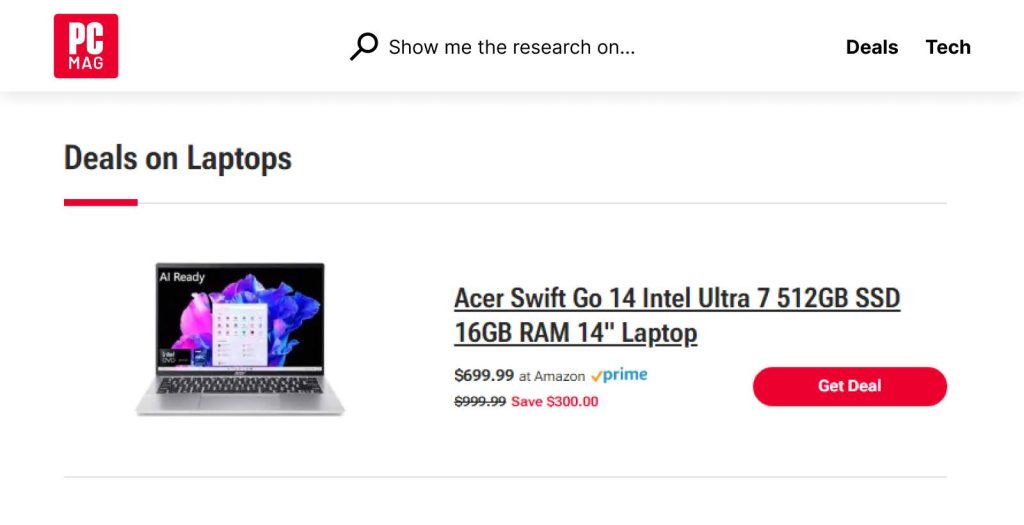
Merchants track the performance of affiliate marketers by giving them unique links with tracking codes. Through this, they can see which affiliate generated the sale and thus, assign the commission accordingly.
Affiliate programs vary—some might offer a percentage of each sale, a flat fee per sale, or even a monthly payment for active users that you refer.
There are some cases, in which programs pay for leads or sign-ups without requiring a purchase. For example, an email marketing service might offer commissions for free trial sign-ups and paid subscriptions.
Affiliate marketing comes with several advantages</spa
- It is low risk: Your primary investment is your time and energy in creating content and promoting affiliate products. It is one of the affordable ways you can start earning online.
- You can earn passive income: Once your affiliate marketing setup is in place, through this you can keep generating income around the clock, even when you are not actively working.
- It is highly flexible: With the help of affiliate marketing, you can control your schedule, niche, and the products you promote, this gives you the freedom to work on your own terms.
How to Become an Affiliate Marketer in 7 Steps
1. Choose a Profitable Niche
A niche is a focused market segment where most people tend to have common interests, preferences, and needs.
Your chosen niche should ideally attract high user interest and have strong profit potential.
To find the right one, you should start by identifying what you are most passionate and knowledgeable about. After determining your niche, make sure that the market has profitable opportunities.
You can use online tools like Semrush’s Market Explorer to assess market demand and competition.
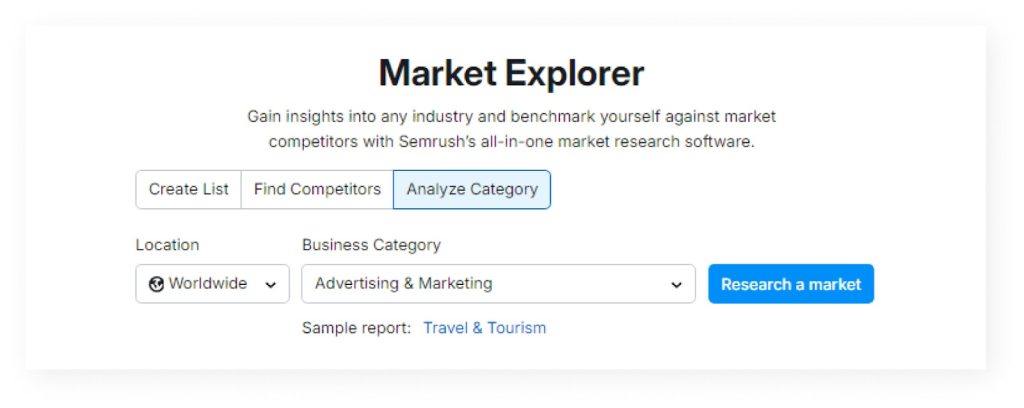
Examine the “Service Addressable Market” data to determine how many potential customers are actively prepared and capable of making purchases. Additionally, review the “Market Traffic” data to easily determine the monthly website visits that businesses in this market mostly receive.
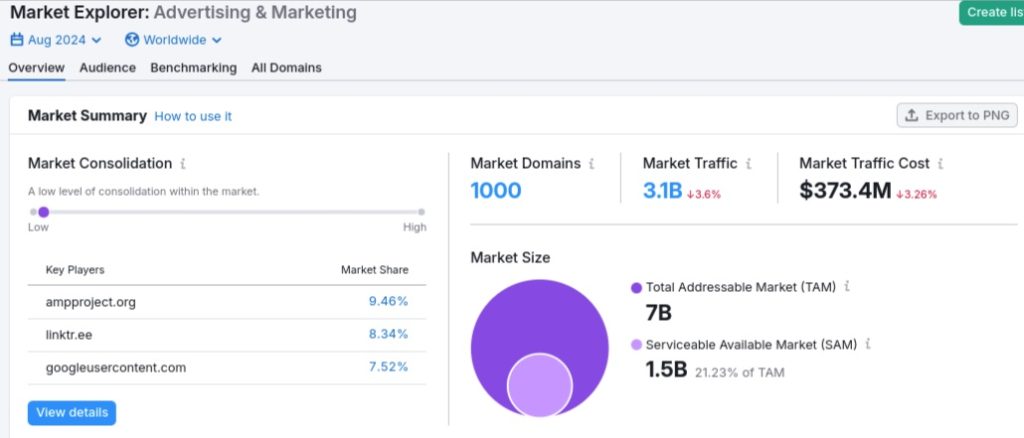
In this case, it is clear that this market holds significant potential.
Next, utilize the Ahrefs Keyword Generator to identify more specific niches.
Begin by entering a broad keyword that relates to your chosen market and click “Search.”

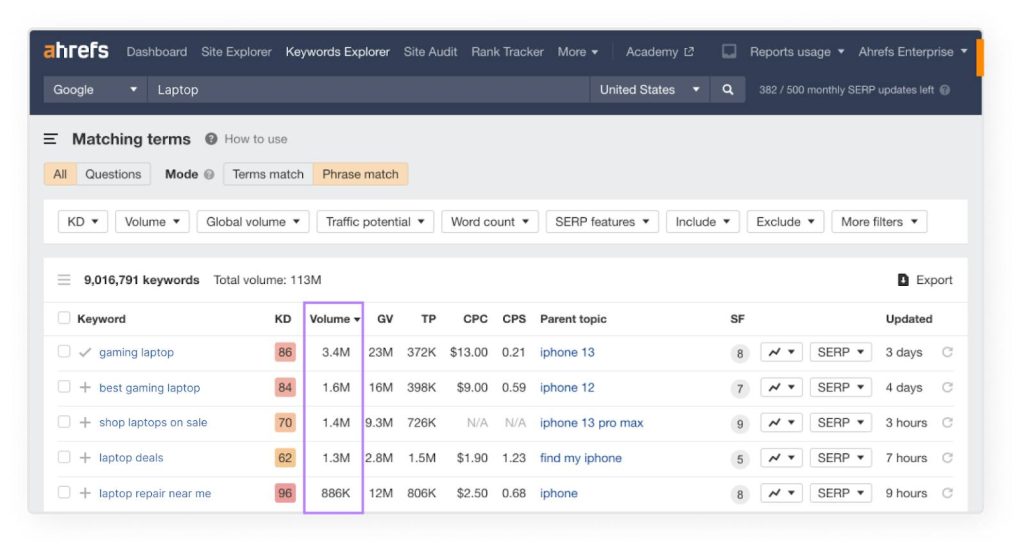
These are potential ideas ranked by the number of monthly searches they receive on search engines—a reliable indicator of popularity.
To become a successful affiliate marketer, make sure the niche you choose has products or services that you can easily sell.
2. Research Your Target Audience
Identifying your target audience plays one of the important roles in terms of promoting the right products and creating relevant content. This understanding can lead you to higher conversions and increased earnings. You can start by analyzing your competitor’s audience using Semrush’s One Target tool for a better understanding.
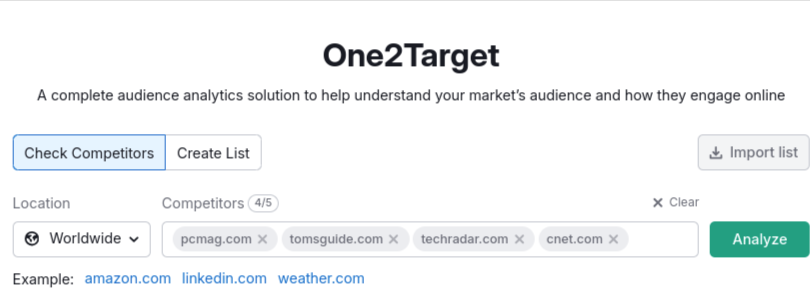
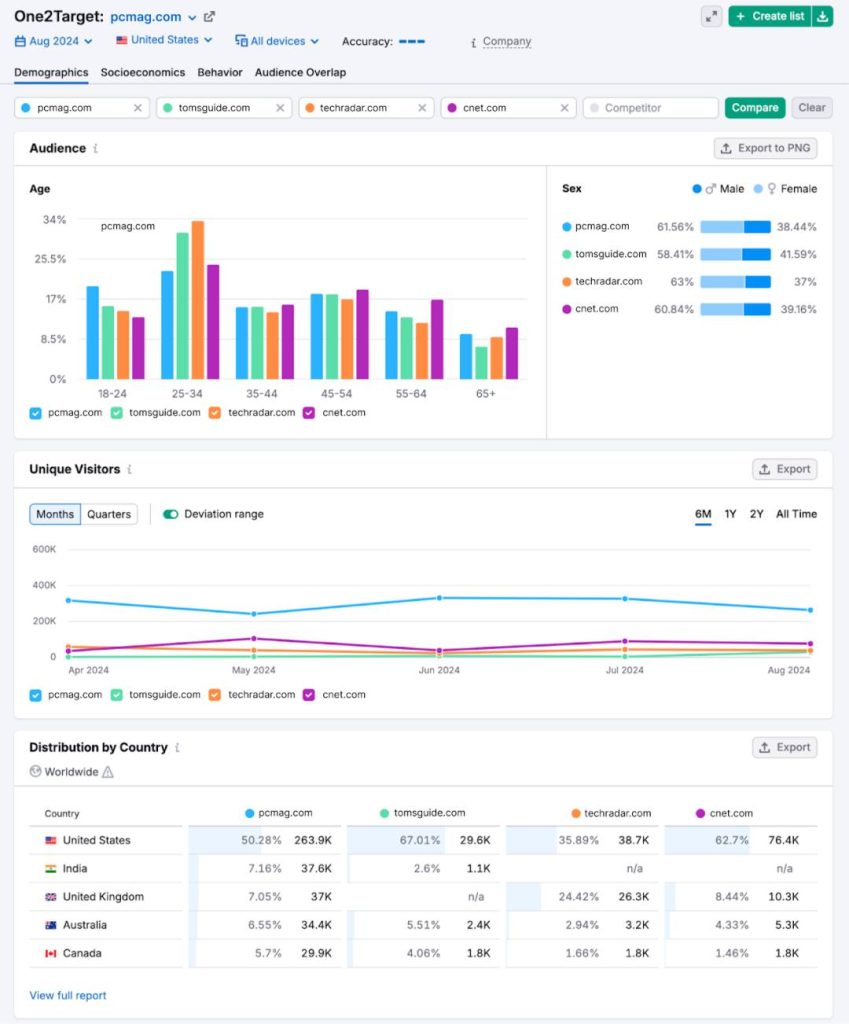
For example, if your interest focuses on gamers and your target audience consists of male and female gamers aged 18–30 who enjoy multiplayer online games.
You can use this information to generate topic ideas and choose suitable affiliate programs.
3. Build a Platform
Next, select a platform—such as a blog, Instagram account, or YouTube channel—where you will be promoting products and services online. The choice of your platform plays a very important role. Thus, it should be one you are comfortable with and align with your niche while ensuring it is frequented by your target audience for maximum impact.
Here are some popular platforms and their best-suited niches-
- Blogs: Great for comprehensive guides and reviews, especially in the health, finance, and tech sectors.
- YouTube: Ideal for tutorials and unboxing, perfect for gaming, cooking, and beauty.
- Instagram: Best for lifestyle content, particularly in fashion and travel.
- TikTok: Perfect for trends and quick tips, fitting well with fitness and humor.
- Pinterest: Excellent for DIY and inspiration, ideal for crafts and home improvement.
- Podcasts: Suitable for in-depth discussions, great for business and self-improvement topics.
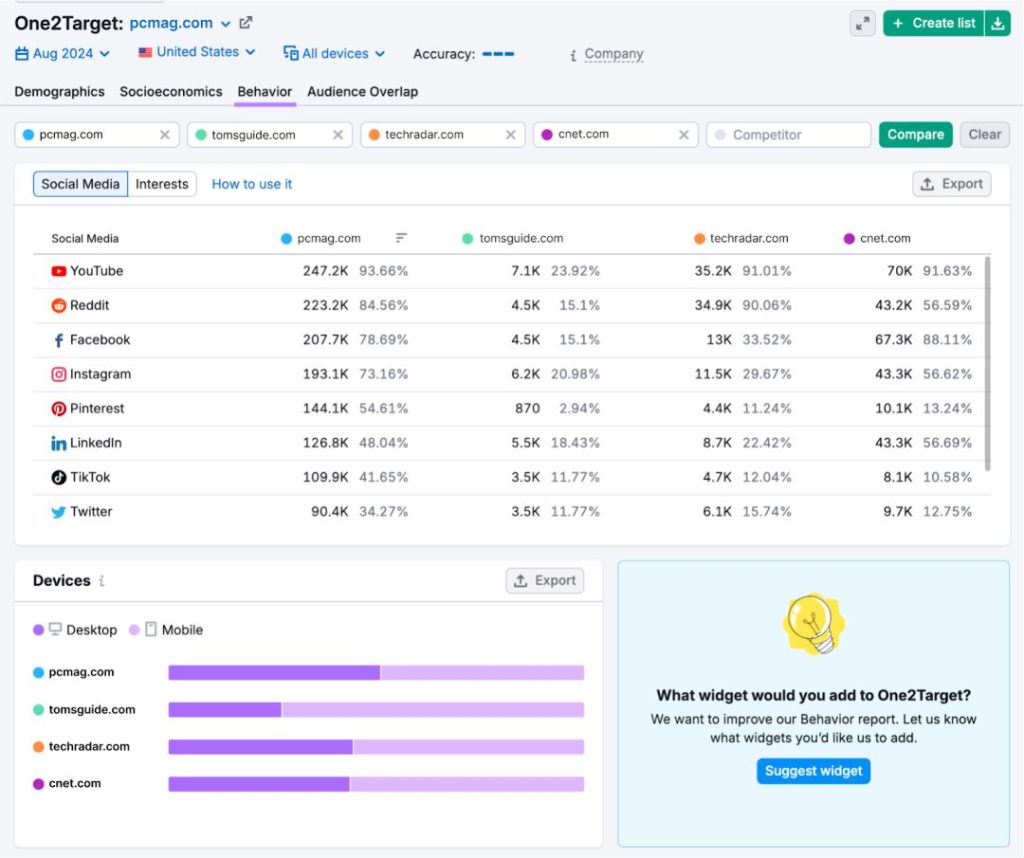
4. Join Affiliate Programs
An affiliate program is a partnership between companies and affiliate marketers, and to become an affiliate marketer, you need to join one. These programs offer the necessary structure and payment systems for your success, which often include tools to measure performance. When you are selecting a program, consider commission rates, available support, product or service quality, reputation, and payment terms. Some of the popular affiliate programs include-
- Shopify Affiliate Program: Ideal for e-commerce solutions.
- Impact: Great for various industries, including travel and lifestyle.
- FlexOffers: Suited for a wide range of niches.
- Target Affiliate Program: Perfect for retail and home goods.
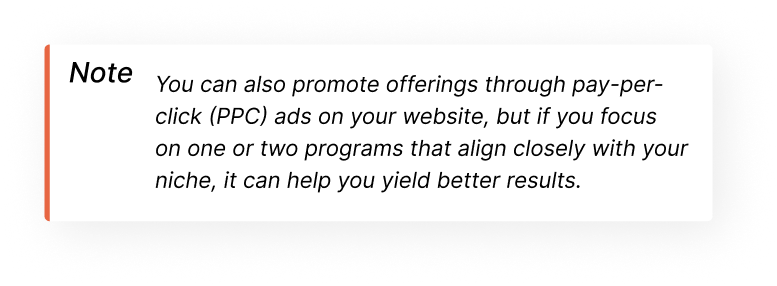
5. Create Quality Content
- Clear
- Valuable
- Actionable
As it will address your audience’s problems and guide them in making instructed decisions. Moreover, with this method, you can easily build trust and authority and increase the likelihood that your audience will follow your advice. High-quality affiliate content often features honest product reviews, clear explanations, and practical use cases.
To create excellent affiliate content, consider these tips-
- Understand your audience's pain points.
- Research thoroughly or test products yourself.
- Use specific examples and data.
- Incorporate visuals like screenshots or videos.
- Regularly update content with the latest information.
If you are writing long-form content, you can use a writing assistant that will help you analyze your writing in real-time and offer suggestions on-
- Readability
- Originality
- Tone
- SEO
6. Drive Traffic to Your Platform(s)
After publishing your affiliate content, the next step is getting people to visit your website, blog, or social media profiles, so you can start earning commissions. If you are focusing on social media, it will be your main traffic source. With the help of social media optimization techniques like adding relevant keywords, using popular hashtags, and adding captions to your videos, you can easily grow your followers and boost visibility.
For blogs and websites, here are a few ways to bring in traffic:
- Organic: Get free traffic from search engines by improving your content’s SEO to rank higher on Google.
- Paid: Run ads on platforms like Instagram or LinkedIn. While this costs money, it can get you faster results.
- Referral: Get visitors from other websites that link to yours by building relationships and securing backlinks.
- Social: Share engaging content on social media and interact with your followers regularly.
- Email: Use your email list to drive traffic by sending targeted campaigns with exclusive offers or content.
It is a good idea to mix up your traffic sources based on where your audience is most active. However, no matter what platform you choose, always try to create high-quality, relevant, and timely content that can help you connect with your audience and encourage them to take action.
7. Monitor Performance & Refine Your Strategy
Tracking how your affiliate marketing efforts are doing helps you figure out what’s working and what isn’t. Don’t just focus on sales and commissions—also keep an eye on things like website conversion rates, social media engagement, and how many people are clicking on your ads (CTR).

For example:
- If your social media ads have a low CTR, try changing the headlines or images.
- If readers leave your blog quickly (high bounce rate), improve your introduction to grab their attention.
- If product sales are low, try new offers or make your call-to-action clearer.
Even through small changes, you can lead your content to significant improvements, so continuously test and optimize your strategy so that you can maximize results.
Can You Really Make a Living as an Affiliate Marketer?
According to a survey by Authority Hacker, an average affiliate marketer earns more than $8,000 per month, with top earners even bringing in six or seven figures a year. However, it might be a big challenge for beginners to make their first sale. Your actual earnings will depend on several factors, such as your niche, platforms, and promotional skills.
That said, affiliate marketing remains a legitimate way you can earn money online, especially as more people adopt online shopping. Success does not come overnight—it requires dedication, strategy, and adaptability. However, if you put in consistent effort, affiliate marketing can offer you significant rewards.


